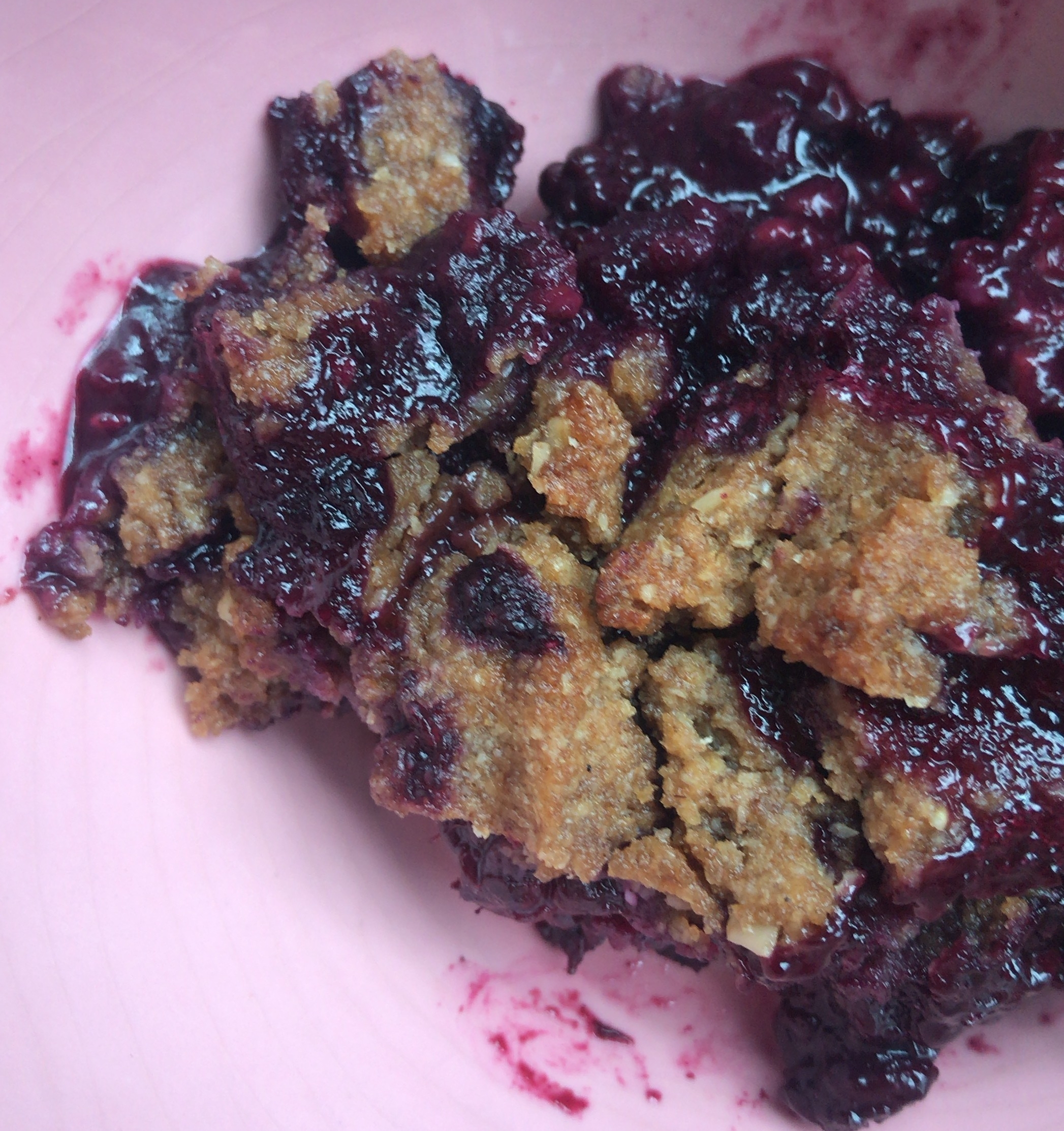My Antiinflammatory Pantry
In 2018, I overhauled my diet. For the most part.
Toward the end of 2018, I also ran a marathon, and my antiinflammatory eating ways more or less went out the window because I was ravenous during training, and I’ve never met a loaf of bread I didn’t like.
The holidays followed the marathon, and I’m not one for New Year’s resolutions per se, but with January came a lack of excuses for why I couldn’t recommit myself to stuffing my face with foods that curb my pain and make me feel better overall.
Luckily, this hasn’t been terribly difficult because this time, it isn’t an overhaul. I’m well set up to go back to giving my body what it needs to feel better.
To recap, I don’t consider this a “diet.” I literally have only been on a diet for one hour of my life. Rather, to me, antiinflammatory means cutting the shit you already know is bad for you (sugar, alcohol, processed crap, etc.) and filling your plate with lots of produce and whole foods, preferably of the organic variety. I don’t want to say it’s a “lifestyle change” because all diets say that, but it kind of actually is.
I am the LAST person to preach to anyone what they should eat. I strongly believe that there is not one diet that works for everyone. Different people have different sensitivities and triggers, and there’s no one-size-fits-all solution. If there was, duh, no one would be sick or at an unhealthy weight.
But I do think eating this way can’t HURT you. And I also know that research shows chronic inflammation is at the core of a lot of our problems from depression to Alzheimer’s to chronic pain. Of course, speaking of chronic pain, endometriosis is an inflammatory disease, so junk food is literally pain-inducing for some women with endo, like myself.
When I embarked on eating this way, I felt totally overwhelmed. But once you get your pantry in order, from there, it’s fun! You pick what you want for your meals and buy the fresh foods you need to cook them. The hard part is replacing all the old shit you’re used to with more antiinflammatory choices.
So today, I’m taking the guesswork out of it for you, and telling you about how I stock my antiinflammatory pantry. (Note about where to buy: I get most of my pantry items through Thrive Market, which is stocked with organic, non-GMO, ethical, natural brands at a massive discount. I find it’s quite easy with Thrive to find some of the more obscure items, but Trader Joe’s is the BEST brick-and-mortar for organic, all-natural, and affordable, and TBH, Target is really stepping up their organic/all-natural game lately.)
Oils: Ditch the canola and vegetable oil for olive, avocado, coconut, and sesame oils. These are frankly tastier anyway. Canola and vegetable oils are not as healthy, and many are cut with soybean oil (and since soy is estrogenic, it’s important for endo sufferers to avoid soy). And speaking of oil that is, um, less than pure, I learned in an episode of one of my favorite podcasts, Gastropod, that a ton of the olive oil we eat in the States isn’t entirely olive oil and is actually rancid because we are basically a trash people. My favorite sanctioned olive oil is from California Olive Ranch. Another hot tip? If you’re cooking with coconut oil but don’t want your dish to taste like coconut, go for refined; Trader Joe’s makes a great triple-refined coconut oil.
Ghee: Ghee is clarified butter; in other words, it’s butter without the milk solids. Therefore, you get buttery goodness without the inflammation of dairy.
Flours: There are so many types of flour out there that stand in admirably (and sometimes better than) white flour, which usually involves gluten and is typically stripped of anything nutritious the wheat may have once had. I’ve been baking with almond flour, gluten-free flour, coconut flour, and oat flour. Like everyone else, I had a major hankering for cookies over the holidays, and some of the healthy cookie recipes I tried held up well. Try these Erin Lives Whole paleo snickerdoodles or these Kale Junkie lemon coconut cookies. I threw some blueberries in mine and the lemon/blueberry combo is doooope.
Oats: I like oatmeal and it’s an easy way to get my seed cycling seeds in when the weather is too cold for smoothies. But even if you don’t like oatmeal, you can make oat flour with oats and a Vitamix or other food processor within seconds, and there are also some other amazing recipes out there like these vegan oatmeal raisin cookies by local blogger the Health Mason or my favorite pre-run breakfast, the Eat Fast Run Slow superhero muffins (I sub ghee for their butter).
Seeds: In addition to trying to slip in chia seeds whenever I can, I also eat pumpkin seeds and flax seeds during the first two phases of my cycle and then sunflower seeds and sesame seeds during the second two phases. The science behind doing this is that the nutritional properties in these seeds help support and balance the hormonal shifts you experience at different parts of your cycle. I’ve been doing this for several months now, and when I skip my seeds, I definitely notice a difference in my cycle — PMDD symptoms, pain, shorter cycles, etc. It sounds crazy, but it is pretty easy to do and works. Pumpkin and sunflower seeds are good on their own, but all these seeds are easy to grind and slip into oatmeal, cereal, smoothies, and more.
Seed butters: When I complained to my friend Caitlin of Frugal Nutrition recently that I was struggling to get in my seeds without the benefits of smoothies (hello wintertime), she recommend seed butters. She said it’s best to eat the seeds freshly ground, but butters are better than nothing. I ordered some no sugar-added sunflower butter (which is SO much better than almond butter honestly) and I’ve already been on the tahini (sesame seed butter) train for some time. And guys…Kale Junkie is NOT kidding when she says these tahini chocolate chip cookies are life-changing. I’ve made them like every other week since the first time.
Nut butters: Peanuts are not exactly antiinflammatory, so I have been shying away from my beloved peanut butter, and I have to be honest. No nut butter stacks up. BUT cashew butter is pretty good in and of itself, and almond butter is pretty decent in smoothies.
Coconut aminos: While this maybe isn’t SPECIFICALLY antiinflammatory, it is a great alternative to soy sauce, which as previously mentioned, is bad news for people with estrogen-dominant diseases like endo. It is a bit sweeter than soy sauce, but it also has more umami flavor if you ask me, and I like it with my sushi more.
Coconut butter: I guess this could technically go under nut butters but do we really consider coconuts nuts? SEMANTICS. This is a great healthy fat to slip into smoothies, or if you’re into that bulletproof coffee thing but not into butter, this goes well in your coffee, offering up some creaminess without the dairy.
Collagen: Because so many protein powders are whey-based (i.e., dairy-based) or loaded with sugar, I really like to use collagen peptides as my protein powder instead. It also dissolves well into coffee or soup and also is easy to slip into smoothies. I particularly like that it is easy to find flavorless collagen peptides, because I find that in an effort to keep protein powder low-sugar, companies use flavoring from stevia, which I personally think has a garbage aftertaste.
Chickpeas: These are SO antiinflammatory, packed with protein, and they take on the taste of however you flavor them, which is pretty easy to do because unless you are specifically sensitive to a certain spice, most spices are perfectly healthy and often even beneficial to consume. Spices are, um, literally the spice of life. I love to snack on chickpeas after roasting them and dousing them in garlic powder. They crisp up on the inside and stay soft in the middle. So delish.
Sweeteners: Speaking of sugar, I think we all know by now that refined sugar is public enemy number 1. It’s super inflammatory and also just generally wrecks your hormonal balance by forcing your organs to work overtime to get your blood sugar leveled off. Science! But don’t get me wrong. Sugar is hard to cut out for a reason. If you follow me on Instagram, you know no one loves a plate of pastries more than I do. Luckily, if you have a sweet tooth like I do, there are some great natural alternatives that more whole than refined sugar, come with health benefits, and have lower glycemic indices. I’m taking about coconut sugar, raw honey, and Grade A maple syrup. Coconut sugar does not taste like coconut; in fact, it smells almost like honey to me and looks like a finer brown sugar. Raw honey is just downright delicious in tea (and basically everything else) and is loaded with antioxidants and other nutritional goodies. And maple syrup is just fucking good and not as bad for you, so what more do you want? All three alternatives are plenty sweet, so a little goes a long way. And don’t forget if you need a chocolate fix, pure cacao powder isn’t loading with sugar, milk, and preservatives like the prepackaged chocolate you find in the candy aisle. I ALWAYS throw cacao into coffee smoothies.
What about you? Have you tried antiinflammatory living? What are your pantry staples? Tell me in the comments or on Instagram!
xo,
S
*Note: I learned most of what I know about antiinflammatory nutrition from WomanCode by Alisa Vitti and The Antiinflammatory Diet Cookbook by Madeline Given (also a source of really delicious, easy, quick recipes).









